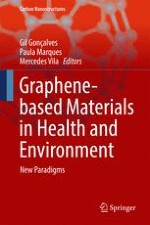2016 | OriginalPaper | Chapter
Potentiality of Graphene-Based Materials for Neural Repair
Authors : María Teresa Portolés, María Concepción Serrano
Published in: Graphene-based Materials in Health and Environment
Publisher: Springer International Publishing
Activate our intelligent search to find suitable subject content or patents.
Select sections of text to find matching patents with Artificial Intelligence. powered by
Select sections of text to find additional relevant content using AI-assisted search. powered by
